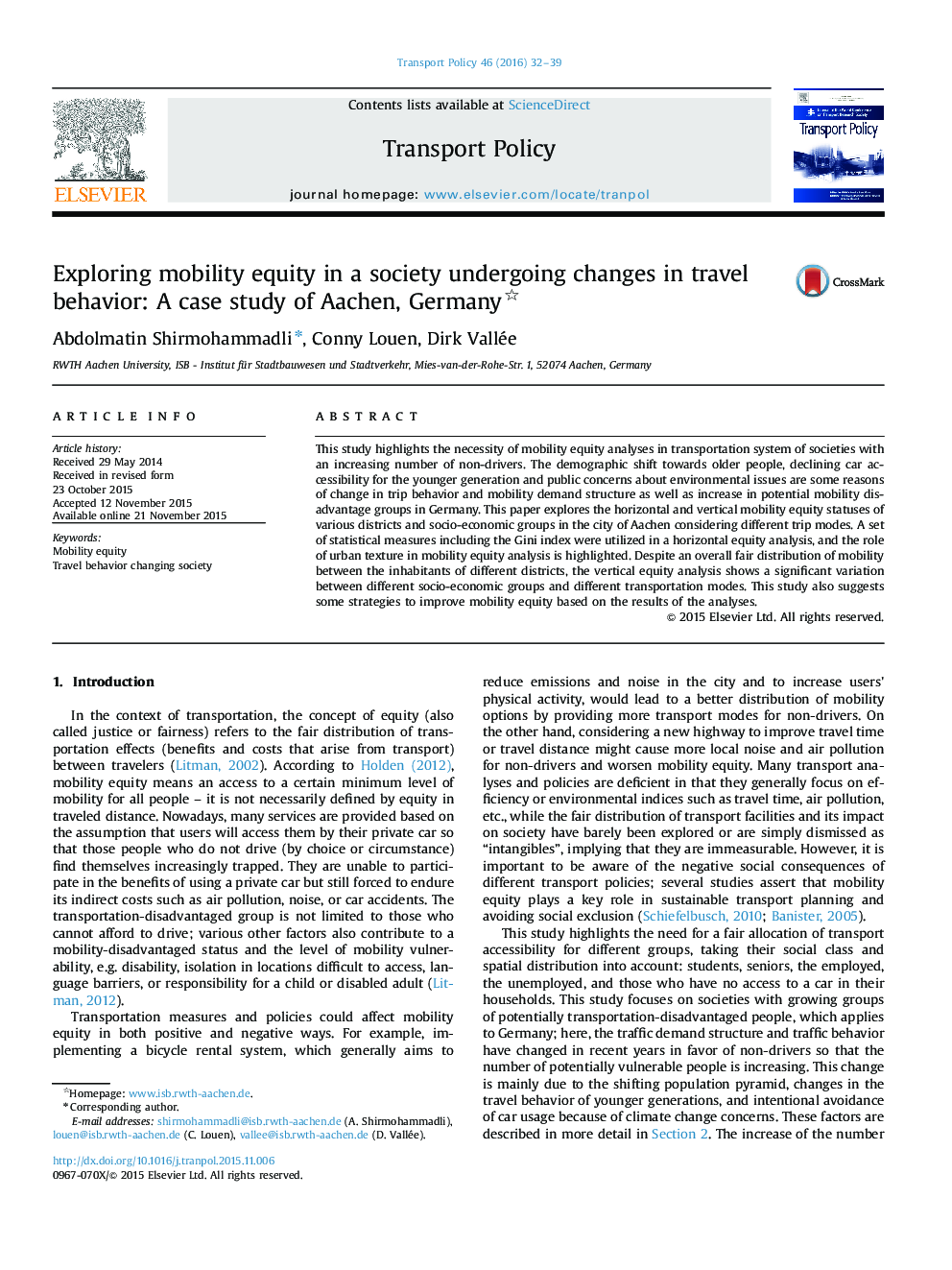| Article ID | Journal | Published Year | Pages | File Type |
|---|---|---|---|---|
| 1064797 | Transport Policy | 2016 | 8 Pages |
•Trip behavior change and its effect on mobility equity in Germany were explored.•Mobility equity analyzed between districts and socio-economic groups in Aachen.•The Lorenz curve depicts an overall fair mobility distribution between districts.•Vertical equity analyze shows a significant inequity between socio-economic groups.
This study highlights the necessity of mobility equity analyses in transportation system of societies with an increasing number of non-drivers. The demographic shift towards older people, declining car accessibility for the younger generation and public concerns about environmental issues are some reasons of change in trip behavior and mobility demand structure as well as increase in potential mobility disadvantage groups in Germany. This paper explores the horizontal and vertical mobility equity statuses of various districts and socio-economic groups in the city of Aachen considering different trip modes. A set of statistical measures including the Gini index were utilized in a horizontal equity analysis, and the role of urban texture in mobility equity analysis is highlighted. Despite an overall fair distribution of mobility between the inhabitants of different districts, the vertical equity analysis shows a significant variation between different socio-economic groups and different transportation modes. This study also suggests some strategies to improve mobility equity based on the results of the analyses.
